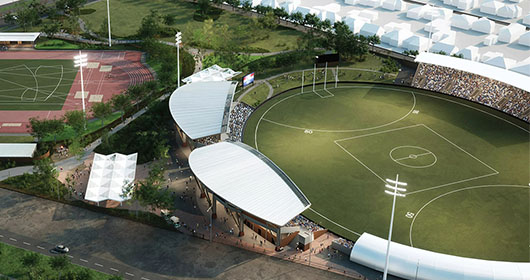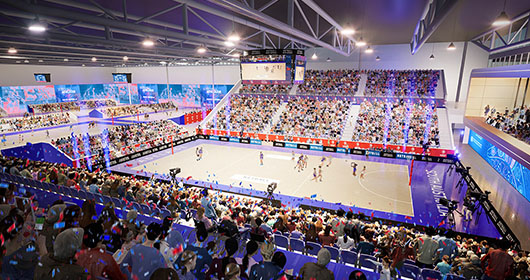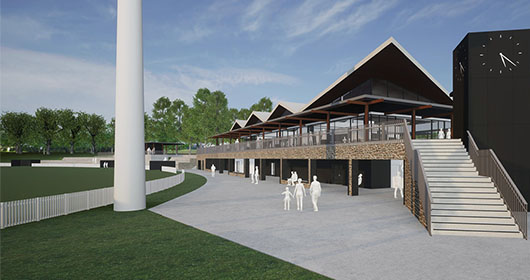Brisbane Olympic Games venue review: Every finding
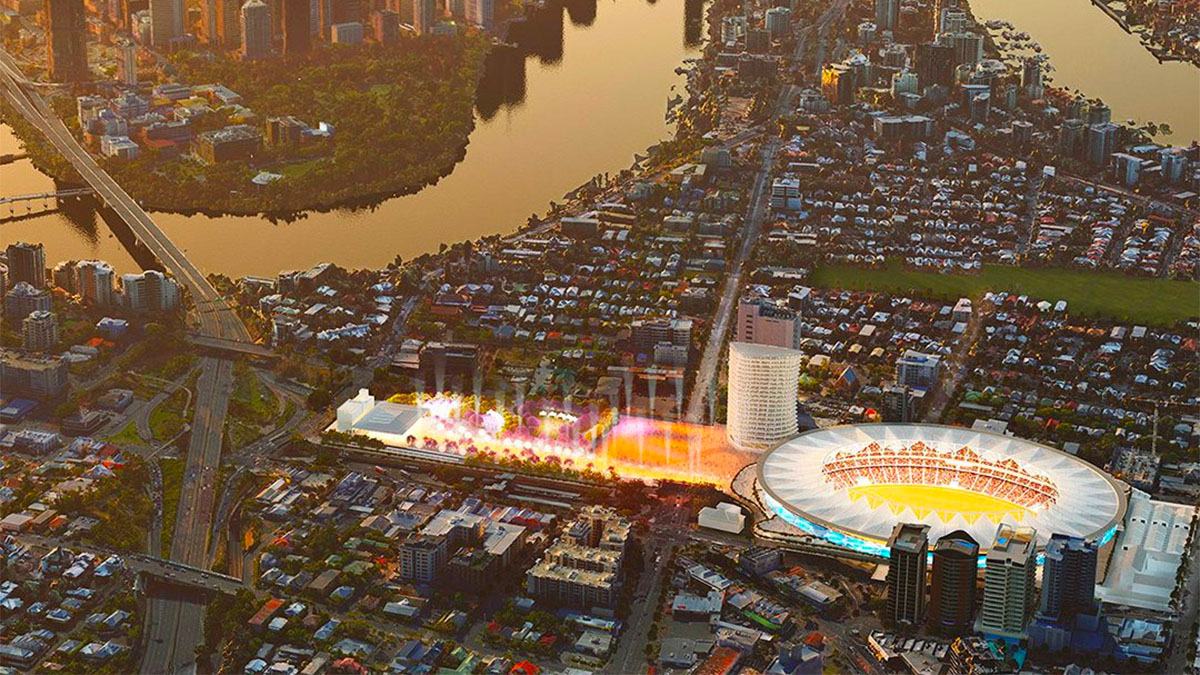
The completed Independent Review of Brisbane 2032 Olympic Games venue infrastructure has been submitted to the Queensland Government.
Chaired by Graham Quirk, the independent Sport Venue Review Panel has concluded its 60-day assessment of potential 2032 Olympic and Paralympic Games venue infrastructure in Queensland.
READ THE FULL REVIEW DOCUMENT HERE
See all 90 findings from the review listed below, starting with the most talked about stadium - the Gabba.
THE GABBA
Finding 1.1
Public perception of the Gabba is very different to the reality regarding its current condition.
Finding 1.2
The experience for most spectators in the stands of the Gabba represents a good experience.
Finding 1.3
In 2018 the Stadium Taskforce Report found that the Gabba is a ‘tired’ venue and would reach the end of its useful life by 2030.
Finding 1.4
The Panel undertook a detailed inspection of the Gabba’s back-of-house facilities and questioned the operators about the stadium’s accessibility for all patrons.
The Panel found that the stadium is an ageing asset requiring substantial upgrading.
It is no longer fit-for-purpose and falls significantly short of the quality of facility enjoyed by spectators in almost all other oval stadiums in Australia.
Finding 1.5
The Gabba structure has not had any major upgrades or capital enhancements for nearly 25 years and many changes to the building code have occurred in that time.
Finding 1.6
The stadium is not compliant with current Disability Discrimination Act (DDA) requirements or with modern building codes. Any significant upgrades will trigger a requirement to meet current codes.
For example, if the shade cover sails need to be replaced, the structures to which they are affixed would also need to be replaced because of changes to the Australian Building Code.
Finding 1.7
The Gabba’s back-of-house operations are severely compromised by poor connectivity and back of space and facilities for stadium hirers, staff, athletes and other stadium users are in many cases appalling.
Finding 1.8
The Panel observed that the Gabba’s ageing facilities and operational inefficiencies have reduced its ability to compete with many stadiums in other cities around the country.
As a result, the Gabba cannot attract new content or events, decreasing its ability to generate revenue and attract visitors to the city.
Finding 1.9
Accessibility at the Gabba is poor. It has 200 fewer accessible seats than is required to meet today’s standards and no accessibility to the field of play for patrons in wheelchairs.
At the conclusion of AFL matches when the kids run on to the field to have a kick of the football or a play, they cannot be joined by any kids in wheelchairs.
Finding 1.10
The Gabba sits on an island land parcel constrained on all sides by Vulture Street, Stanley Street, Mains Road and Wellington Road, all major inner-city roads.
This restricts the stadium’s footprint and the ability to redevelop or expand.
Finding 1.11
The Gabba was originally designed with a capacity of 42,000 seats, however, the operational capacity is significantly less due to the installation of video boards, coaches’ boxes and accessible seating.
The Gabba currently has an operational capacity of 33,000 seats for cricket and 37,000 seats for AFL events.
Finding 1.12
Partial redevelopment of the Gabba will not resolve the operational inefficiencies and moreover will restrict future development of the Gabba (such as seating increases above 40,000).
The development of a new western stand was explored along with structural upgrades to the remaining stadium, with total project cost estimated at approximately $2bn.
Any upgrade will have an impact on the number of seats available during the works.
Finding 1.13
The full Gabba rebuild will likely cost around $3bn (plus $185 – $360m in displacement costs for AFL and cricket).
Given the limited opportunity to expand the Gabba beyond the land parcel it sits on, a full Gabba rebuild will not deliver to the full brief of an international standard stadium.
These issues cannot be designed out or resolved in a new stadium in the current location.
Finding 1.14
On inspection of the QSAC Stadium, the Panel found a solid existing stadium and training facilities on a large site constrained by significant changes in topography.
Finding 1.15
QSAC Stadium is comprised of temporary aluminium seating from the 1982 Commonwealth Games and a western stand.
Both the temporary grandstands and existing western stand do not meet current DDA accessibility requirements and the temporary grandstands are at the end of their useful life.
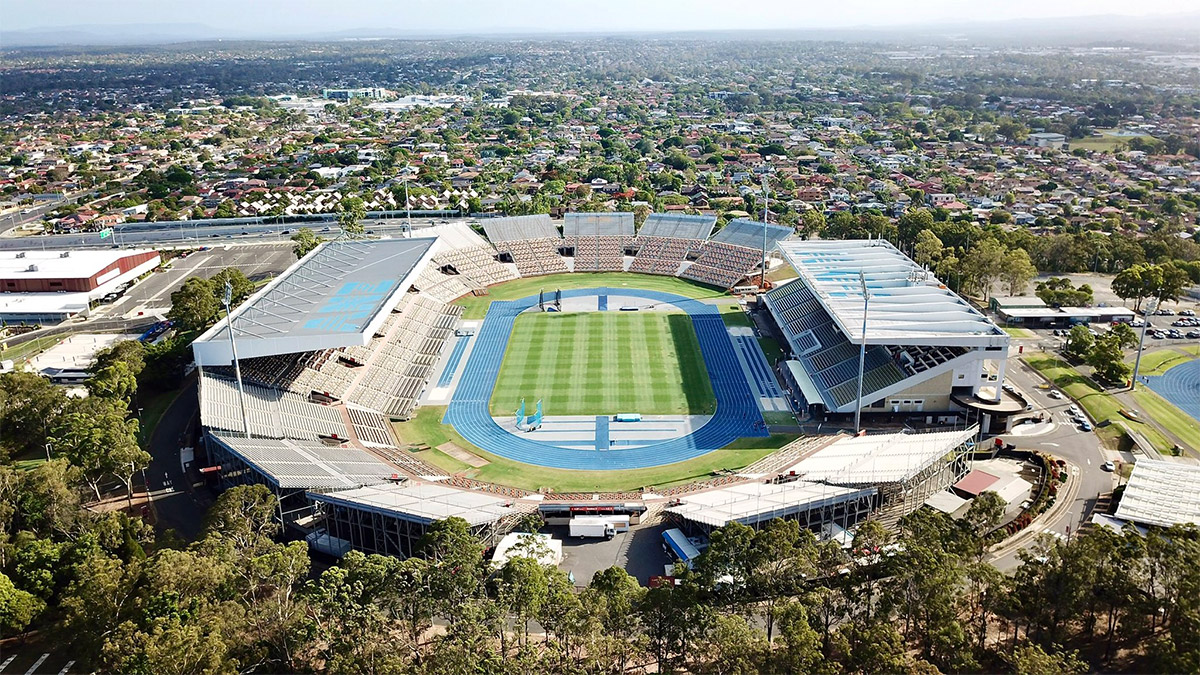
Finding 1.16
In the event of a redevelopment of QSAC Stadium, a number of high-performance athletes preparing for world championships, or an Olympic, Paralympic or Winter Olympic Games, would be displaced from the high-performance training facilities at QSAC, and alternative facilities of the same level would need to be made available.
Finding 1.17
Transport and access to the QSAC Stadium during the Games will be extremely challenging and costly to facilitate.
Site topography makes this challenge even harder, noting significant Games operational requirements to safely support the number of spectators, athletes and officials.
Griffith University would need to be used for bus access, and as a result, bushland would need to be cleared and the pathway to the QSAC Stadium widened.
Finding 1.18
The cost of an upgraded 14,000 seat QSAC Stadium is expected to be around $600m and would meet legacy requirements.
Finding 1.19
The challenging topography of the QSAC site results in a substantial podium and other permanent structures being required solely to support Games’ operations.
In addition to the legacy upgrade, a further $1bn investment is required to support the Games’ operations and increase the seating capacity to 40,000 seats.
Finding 1.20
The Panel formed the view that while existing users would benefit from an improved experience, there was a very limited broad community legacy from this significant expenditure at QSAC and that the cost did not represent value for money.
Finding 1.21
An upgrade of the QSAC Stadium does not represent value for money and has limited legacy opportunities given the current QSAC Stadium is able to meet the existing high demand for community use.
Finding 1.22
Given the limitations of a Gabba rebuild in its current location, the Panel formed the view that a better legacy investment for a Stadium would be realised by considering a greenfield site.
Finding 1.23
Victoria Park, largely zoned for sport and recreation was identified as a potential greenfield site for a stadium. The exact location of a stadium within Victoria Park should be subject to further analysis, including exploring existing built upon and previously disturbed areas.
Finding 1.24
A stadium in Victoria Park would have great transport connectivity when Cross River Rail and Brisbane Metro services are operational.
Finding 1.25
The cost of a stadium in Victoria Park ($3.0 – $3.4bn) is likely to be marginally more expensive than the full Gabba rebuild (more than $3.0 billion) with better operational efficiencies and outcomes that would deliver a true international standard venue enabling Brisbane to compete with other top stadiums in Australia and generate additional premium seating revenue.
Finding 1.26
The construction of a stadium on an inner-city greenfield site allows a smooth transition with no displacement for cricket and AFL while a new stadium is constructed.
GABBA RECOMMENDATIONS
Recommendation 1.1
The Gabba be maintained to a minimum standard until a new stadium is constructed at a different location allowing the current stadium to be demolished and the site repurposed.
Recommendation 1.2
QSAC Stadium should not be used as an Olympic and Paralympic Games venue to host the track and field events.
Recommendation 1.3
The option for a stadium in Victoria Park proceeds to Project Validation Report stage as a matter of priority.
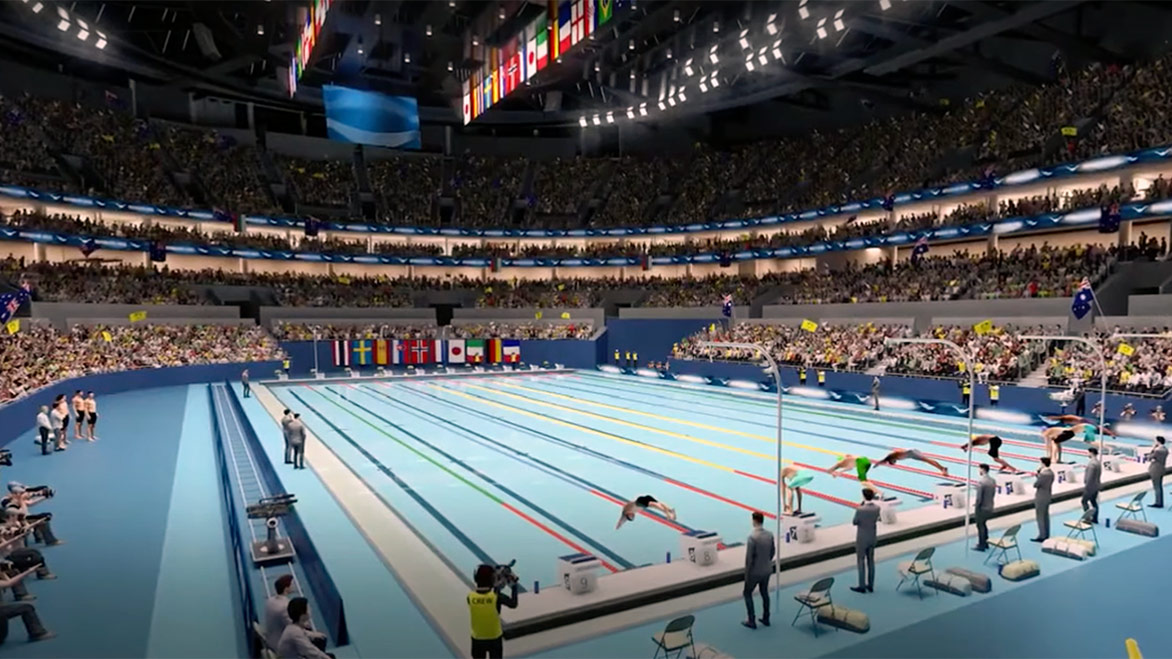
BRISBANE ARENA
Finding 2.1
Brisbane Arena is a much-needed community facility that will have a legacy that will last for decades. It is also very suitable as an Olympic and Paralympic venue.
Finding 2.2
While the Roma Street over-rail site is viewed as a superior site, the development of the joint business case found that there are significant program and cost risks associated with developing the Brisbane Arena at this site.
Finding 2.3
The Panel’s considered assessment is that the construction and subsequent flow-on costs of an arena, partially built over the railway line on the Roma Street over-rail site, would be in excess of $4bn.
Finding 2.4
In addition to the construction cost, it is expected that construction activity will result in a significant and costly impact on the rail signalling system.
Finding 2.5
The Panel was advised that 40 per cent of rail services passing through Roma Street Station would have to close for more than two years.
It is calculated that around 200 additional buses, not included in the current $2.5bn budget, would be required to provide a rail replacement service along with the construction of temporary bus set down bays.
Finding 2.6
The construction timeline presented to the Panel projected a completion date at the end of 2031, leaving very little room for unanticipated delays that can invariably arise on complex construction sites.
Finding 2.7
The Review Panel explored the current carpark and maintenance depot development site, to the north of the Roma Street Parklands around 500 metres from the Cross River Rail and Metro Stations, as the next most suitable site.
Finding 2.8
To facilitate the development of the Arena, site connections would need to be addressed, including vehicular and accessible pedestrian linkages. Provision for underground carparking also needs to be part of the design.
Recommendation 2.1
The Brisbane Arena as originally proposed at the Roma Street over-rail site does not proceed at that location.
Recommendation 2.2
The Brisbane Arena be built on the carpark and maintenance depot development site north of the Roma Street Parklands, adjacent to College Road, and this option should proceed to Project Validation Report stage as a matter of priority.
Recommendation 2.3
Works need to be undertaken to ensure the existing internal pathway between the new Arena site and Roma Street Station is widened and redesigned to meet modern accessibility standards.
BRISBANE ARENA RECOMMENDATIONS
Recommendation 2.4
Appropriate connections and the provision of carparking are included in the detailed design to properly meet the commercial and operational needs of such a facility.
INDOOR SPORTS CENTRES
Finding 3.1
Two indoor sports centres at Coomera and Carrara, built for the Gold Coast 2018 Commonwealth Games, have been extremely well used, are almost cost neutral to operate, and have been very popular with the Gold Coast community.
Finding 3.2
There is a significant and well documented deficiency in the number of community indoor courts across South East Queensland to meet existing and growing demand for community indoor sport and active recreation.
Finding 3.3
The number and capacity of indoor sports venues identified in the Master Plan is appropriate and should be maintained.
Further capacity could be added which would provide more flexibility for the Brisbane 2032 Organising Committee and provide a strong legacy benefit for South East Queensland.
Finding 3.4
Delivery of an indoor sports centre at Albion Park Raceway has significant site constraints, program delay risks, and precinct and displacement costs that far exceed the current project budget.
Finding 3.5
Alternative venue locations in the Albion precinct have an even greater level of constraint, costs and program delay risks compared with the Albion Park Raceway site.
Finding 3.6
An indoor sports centre servicing northern Brisbane is required from a community demand perspective.
Finding 3.7
As per the commitment in the Future Host Questionnaire response, a community and high-performance para-sport facility will be an important legacy venue in the lead-up to, and after, the Games.
Finding 3.8
Moreton Bay Indoor Sports Centre is located in a high growth corridor, has great transport connectivity, will address some of the indoor court deficiencies in the region, and provide significant legacy outcomes and benefits for the Moreton Bay community.
Finding 3.9
The Logan Indoor Sports Centre will service one of the fastest growing areas in South East Queensland. It will help to address the significant current and projected shortfall in indoor courts and provide great legacy benefits for the Logan community.
Finding 3.10
The Sunshine Coast will continue to experience significant growth, and a new indoor sports facility will address some of the indoor court deficiencies in the region and has a strong legacy case.
INDOOR SPORTS CENTRE RECOMMENDATIONS
Recommendation 3.1
Do not proceed with building an indoor sports centre at the Albion Park Raceway site.
Recommendation 3.2
Complete the site selection process for a new indoor sports centre site at Zillmere, or Boondall, to deliver a much-needed indoor sports centre to service Brisbane’s northern suburbs.
Recommendation 3.3
Maintain provision for a para-sports centre at either the alternative Brisbane Indoor Sports Centre venue location, Sleeman Sports Complex or other facility in consultation with relevant stakeholders.
Recommendation 3.4
Proceed with the Moreton Bay Indoor Sports Centre project and increase the size of the centre to allow for greater crowd capacity and increase flexibility of sports that could be allocated for the Games and attracting future events to the venue.
Recommendation 3.5
Continue with planning and delivery of the Logan Indoor Sports Centre.
Recommendation 3.6
Progress the investment decision for the Sunshine Coast Indoor Sports Centre as a priority to maximise the legacy benefit for the community.
Recommendation 3.7
Include sufficient storage and support spaces in the design of indoor sports centres to allow for use by multiple sporting organisations before and after the Games.
Recommendation 3.8
All indoor sport centres should proceed to procurement as soon as possible to maximise the legacy benefit for the community.
SLEEMAN SPORTS COMPLEX
Finding 4.1
The inclusion of additional land into the Sleeman Sports Complex could be used for additional sports facilities, provide room for future expansion of the precinct, or accommodate temporary facilities to support Games operational requirements.
Finding 4.2
The Chandler Indoor Sports Centre will provide significant legacy outcomes for community sport across southern Brisbane and will benefit from co-location opportunities for high-performance programs in the broader Sleeman Sports Complex.

Finding 4.3
An upgraded Brisbane Aquatic Centre will provide legacy benefits and is considered value for money.
However, refurbishment works may create challenges for high-performance sports (diving, water polo, artistic swimming and aerial jumps) and could impact training preparation for the Los Angeles 2028 and Brisbane 2032 Games and other competitions.
Finding 4.4
The Anna Meares Velodrome and BMX Supercross are both high quality facilities.
Subject to the proposed minor works, these facilities are fit-for-purpose for hosting Games events and represent good value for money.
Finding 4.5
Subject to the proposed minor works upgrade, the existing Brisbane International Shooting Centre is fit-for-purpose for hosting Games events.
The opportunity should be there to explore further legacy outcomes for this venue including change facilities and storage.
SLEEMAN SPORTS COMPLEX RECOMMENDATIONS
Recommendation 4.1
Explore opportunities to acquire additional land around the Sleeman Sports Complex to provide room for further expansion of the precinct and help with the Games operational requirements.
Recommendation 4.2
Proceed with building the Chandler Indoor Sports Centre as scoped in the Project Validation Report.
Recommendation 4.3
Continue with the Brisbane Aquatic Centre upgrade project as scoped.
Recommendation 4.4
The Queensland Government works with impacted high-performance sports to minimise disruption during the Brisbane Aquatic Centre upgrade.
Recommendation 4.5
Continue with the Anna Meares Velodrome and BMX Supercross minor works project as scoped.
Recommendation 4.6
Continue with the Brisbane International Shooting Centre minor works project as scoped and explore legacy opportunities.
ROWING AND CANOE VENUES
Finding 5.1
Wyaralong Dam is a rowing facility that will provide a very scenic advertisement as part of the Games. It is currently the site for Rowing Queensland competitions.
Finding 5.2
The Review Panel examined several alternatives to the Wyaralong Dam proposal.
These included Lake Kurwongbah, an existing gravel quarry in the Moreton Bay Region, and other potential greenfield sites.
The gravel quarry and greenfield sites were found to be cost prohibitive while Lake Kurwongbah was expected to have significant environmental impacts.
Finding 5.3
The Panel found that the Redland Whitewater Centre proposal and the Penrith Whitewater Stadium in Sydney were the two most plausible options for whitewater sports.
Finding 5.4
The Penrith Whitewater Stadium experiences poor weather conditions (wind and temperature) at the equivalent time when the Games will be held.
In previous years, the venue has been closed between June and September.
Finding 5.5
The Redland Whitewater Centre proposal presents a compelling case. The Review Panel saw a range of advantages to building the facility including strong legacy outcomes:
– There is a sound financial model for the facility
– The facility provides a regional attraction which could have broader benefits to the Redlands
– The centre would provide a convenient training facility for State Emergency Service, Queensland Surf Lifesaving and other first responder agencies
Finding 5.6
Environmental issues raised by community members were examined, however the Panel formed the view that these issues can be managed and will be subject to the Environment
Protection and Biodiversity Conservation Act approval.
ROWING AND CANOE RECOMMENDATIONS
Recommendation 5.1
Proceed with the Wyaralong Flatwater Centre, however more work needs to be undertaken to consider locating the rowing centre on the eastern bank of Wyaralong Dam where the
Queensland State Rowing Centre is currently located.
Recommendation 5.2
Proceed with the Redland Whitewater Centre project as scoped.
REGIONAL STADIUMS
Finding 6.1
The Sunshine Coast Stadium will have a strong legacy outcome and benefit, achieving operational efficiencies in a precinct with existing venues, and providing capacity for the growing region.
Finding 6.2
A stadium at Barlow Park, in Cairns, will have a strong legacy outcome and benefit, leveraging existing venues and providing capacity for a growing city.
Finding 6.3
There is minimal identified legacy resulting from the proposed upgrades to the Toowoomba Sports Ground and it is unclear what additional content would be attracted to Toowoomba as a result of an upgrade.
REGIONAL STADIUMS RECOMMENDATIONS
Recommendation 6.1
Progress the investment decision for the Sunshine Coast Stadium as a priority to maximise the legacy benefit to the community.
Recommendation 6.2
Continue with the Barlow Park project as scoped.
Recommendation 6.3
Do not proceed with the Toowoomba Sports Ground project.
Instead, explore other opportunities to host Games events in the Toowoomba Region which align to the region’s desired legacy outcomes.
MINOR PROJECTS
Finding 7.1
The proposed upgrade to the Sunshine Coast Mountain Bike Centre will provide value for money. It leverages existing uses, provides more capacity, and creates a tourism and commercial benefit.
Finding 7.2
The Queensland Tennis Centre is the only logical site for the staging of Games tennis events. The Games are likely to see an additional 30% more players and 44% more matches played compared to a Brisbane International.
The Review could not satisfy itself whether sufficient facilities are available and further examination of the requirements of the facility for the Games is required.
MINOR PROJECTS RECOMMENDATIONS
Recommendation 7.1
Continue with the Sunshine Coast Mountain Bike Centre upgrade project as scoped.
Recommendation 7.2
The Brisbane 2032 Organising Committee should examine what other works, if any, need to be undertaken to ensure the Queensland Tennis Centre is fit-for-purpose for the Games.
OBSERVATIONS AND MATTERS FOR GOVERNMENT
Recommendation 8.1
The Queensland Government works with the Brisbane 2032 Organising Committee to confirm sports as early as possible.
Recommendation 8.2
The Queensland Government considers a multitrack approach to project development and considers a delivery partner approach to procurement and delivery.


